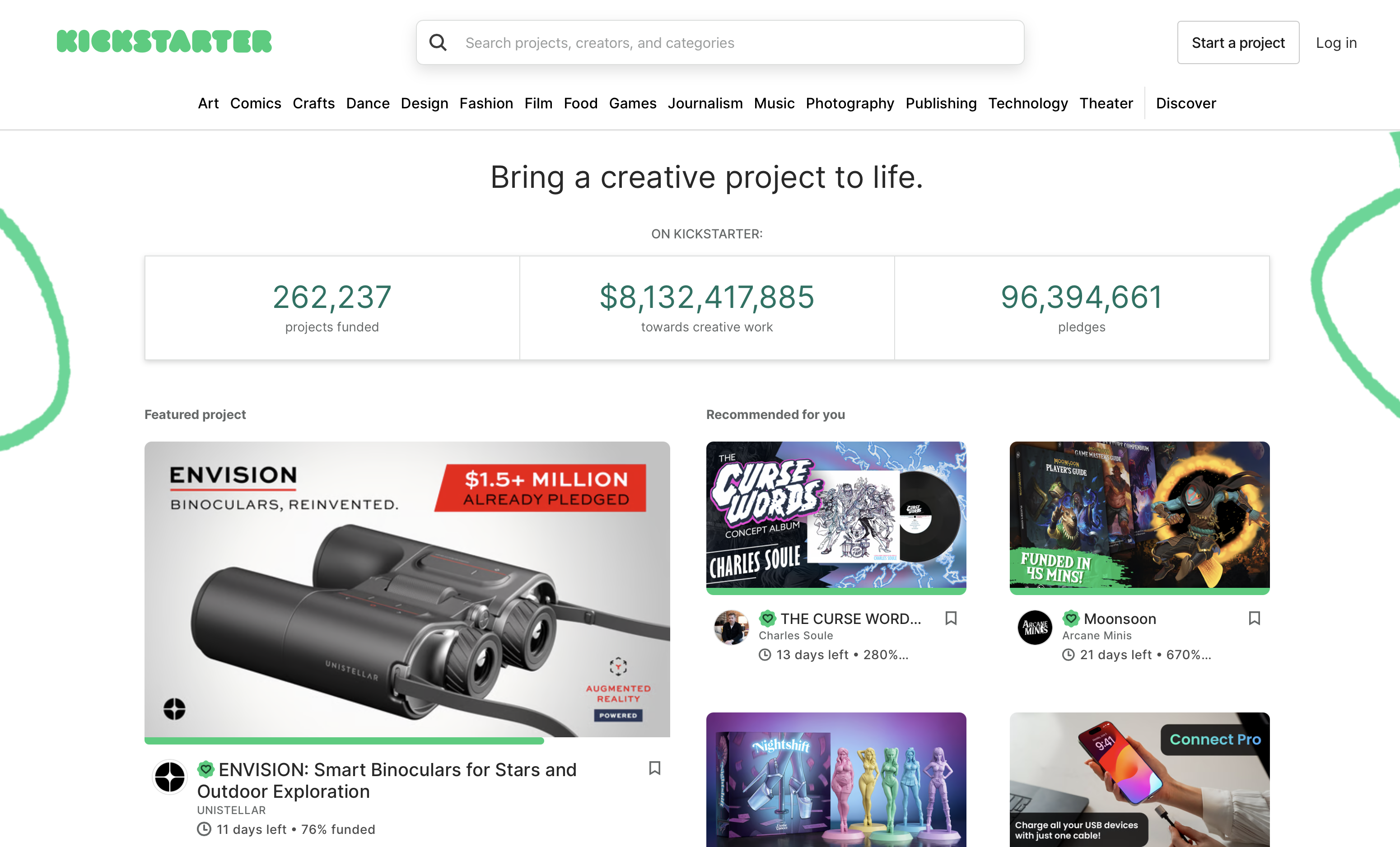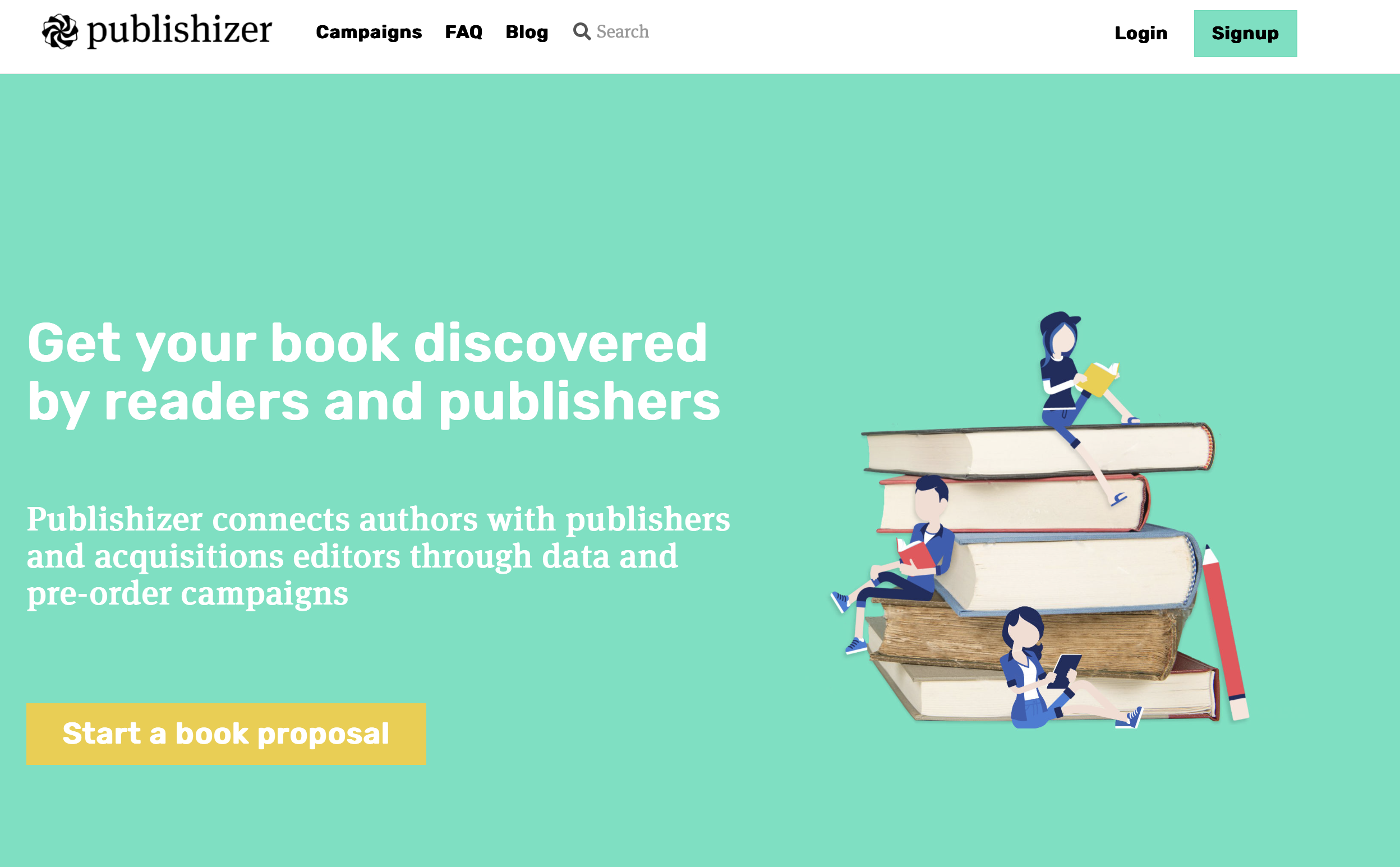How to Crowdfund Your Book [5 Biggest Crowdfunding Platforms for Writers Included]

Crowdfunding empowers authors to bypass traditional gatekeepers.
As Thomas Umstattd, Jr. notes: Traditional publishers function as venture capitalists for authors. For indie publishers, crowdfunding bridges the gap between upfront costs and future earnings, solving a cash flow challenge.
Writers can ask for their readers’ support, securing funds for their projects while building an audience. With crowdfunding you turn passionate readers into investors and advocates.
Here is a guide on how to crowdfund your book.
Main takeaways:
- Crowdfunding helps authors raise money directly from readers to cover publishing costs and build an audience before their book is released. It gives authors more creative control and eliminates the need for traditional gatekeepers.
- To run a successful crowdfunding campaign, authors need to set realistic goals, create a compelling pitch, offer attractive rewards to backers, and maintain momentum throughout the campaign.
A. What Is Crowdfunding?
Crowdfunding secures funds for writers directly from readers. This money covers production costs and builds an audience before the book release.
To raise the necessary funds, authors need to share their projects on crowdfunding platforms, detailing their ideas and offering rewards to backers.
Unlike traditional publishing, crowdfunding opens the way to self-publishing, which gives writers creative control and ownership. It eliminates gatekeepers and long waiting periods.
Alternatively, authors could search for grants for writing books to gain the financial support they need for their writing journey. Such funds for writers, alongside crowdfunding, provide diverse paths for authors to bring their projects to life.
B. Prepare Your Crowdfunding Campaign
When planning your crowdfunding campaign, there are a few essential steps to follow:
1. Set achievable goals
First step in how to crowdfund a book: start by listing all potential expenses.
This includes costs for professional editing, cover design, formatting for both print and digital versions, printing and distribution for physical copies (keep in mind to reward your backers with copies of your book), and marketing efforts.
In other words, set a realistic and achievable fundraising goal. This determines the success of a crowdfunding campaign.
Authors should balance their financial needs with what's attainable based on their audience and platform. Consider the size and engagement level of your existing network when determining your target. A strong, supportive audience can significantly impact a campaign's success.
Another thing that will help you set your goals is to research similar campaigns. See how other authors did it and follow their examples.
2. Start pre-launch preparation
When you want people to help you with your book, you need to let them know what you want to publish, right? Besides giving all the details in your project description, you should also create a bit of buzz on your social media channels.
Share teasers of your book concept, behind-the-scenes of your writing process, and engage with potential backers through Q&A sessions or live streams.
This early engagement sets the stage for the upcoming campaign.
Create a mailing list to notify supporters when your campaign launches. If you already have one, you know how important it is.
While preparing your crowdfunding strategy, you can also research book publishing grants. Such grants for writing books can provide additional financial support.
C. Launching Your Crowdfunding Campaign
Once you have everything ready, think about when you want to launch your campaign. Try to avoid holidays or major events that might divert attention from your project.
Then, plan for a campaign that’ll last for 30-45 days on one of the biggest crowdfunding platforms to give yourself enough time to reach your goal. We will get back to the crowdfunding platforms later.
💡Remember: you need to balance the feeling of urgency to nudge your backers to contribute while allowing yourself enough time to reach your goal.
Campaign start: How to write a crowdfunding pitch
Now, you need to help people know your unique selling proposition. Here’s how to write a crowdfunding pitch for your book.
1. Narrative
Authentic storytelling helps potential backers connect with you and your project on an emotional level.
- Start with a compelling hook that grabs attention, and state your book's premise and why it matters.
- Outline your qualifications as an author.
- Share the inspiration behind your book and your personal writing journey.
👉 Be concise and use clear language; avoid jargon that might confuse readers.
👉 Break up your text with subheadings and bullet points to enhance readability.
2. Visuals
High-quality visuals help your pitch as your backers will have a better idea of what and who they’re helping. So, you can include professional images of your book cover, relevant illustrations, and photos of yourself.
You can also consider creating a short video where you introduce yourself and your project. This will increase people’s trust in you.
3. Rewards
Let your backers know exactly what they'll get for their support. Make sure these rewards are something they'll value, like signed copies, exclusive bonus content, or even personalized touches for your biggest fans.
If you've got endorsements from big names, positive reviews, or a history of successful projects, don't forget to mention them. This social proof shows potential backers you're legit and makes them more likely to jump on board.
4. Call to action
Make it easy for your readers to take the next step, whether that's making a pledge or spreading the word about your campaign. Including a call to action at the end of your pitch will help people know exactly what you need.
💡Remember, the crowdfunding pitch is not just about securing funds for writers; it's about building a community around your book project. Craft your pitch to resonate with your target audience and share your passion for your work.
Mid-campaign buzz
After you launch your pitch, you should keep your readers informed about your writing and publishing process.
These updates demonstrate your commitment to the project.
Keep things fresh by introducing new rewards or limited-time offers throughout the campaign. This is a way to reignite the interest of existing backers and grab the attention of new ones who might have missed it at the start.
Share snippets or chapters to give backers a taste of your work, further solidifying their support and potentially attracting new backers through word-of-mouth.
Campaign end
As your campaign nears its end, intensify your promotional efforts to capture any last-minute contributions.
Remind your network about the campaign's closing date to create a sense of urgency, and don’t forget to thank supporters and share your excitement about the project's future.
Post campaign follow-up
Now that your crowdfunding campaign has ended, there is no time to waste.
Here are some steps that you need to take.
👉 Order the printed books and merchandise or distribute the promised digital content. Ensure that physical items meet or exceed the standards promised during the campaign.
👉 Let backers know when they can expect their rewards and when the book will be finished. Things don't always go exactly according to plan, but if there are any delays, be honest with your supporters. Explain what's happening and give them a revised timeline as soon as you can. Being transparent builds trust and keeps everyone excited about the project.
👉 Show genuine appreciation to your backers through personalized thank-you notes and special mentions in your book. Consider hosting virtual or in-person events to celebrate the book's completion.
👉 Invite your backers to participate in your future projects. Offer them early access to new works, opportunities to provide feedback on ideas, or special roles in upcoming campaigns. This nurtures a sense of community around your work and can turn backers into passionate advocates for your writing career.
5 Biggest Crowdfunding Platforms for Authors
1. Kickstarter

Kickstarter is one of the biggest crowdfunding platforms with a dedicated publishing section. It operates on an all-or-nothing model, which can create a sense of urgency among backers.
Pros:
- Has a large, engaged user base
- Strong community support for creative projects
- The all-or-nothing model can motivate backers to push campaigns over the finish line
Cons:
- Risk of receiving no funds if the goal isn't met
- High competition among projects
- May require significant marketing efforts to stand out
2. Indiegogo

Indiegogo offers more flexibility in its funding models, allowing authors to choose between fixed and flexible funding options.
Pros:
- Flexible funding option allows authors to keep funds even if the goal isn't reached
- Extensive marketing tools and resources
- InDemand feature for continued fundraising after the campaign ends
- Has an integrated e-commerce module feature to help you sell ready-to-ship products and scale your business
Cons:
- Potentially higher fees compared to other platforms
- Less book-specific community focus
3. Unbound

Unbound is a UK-based platform specifically designed for book projects, offering a hybrid model of crowdfunding and traditional publishing support.
Pros:
- Focused audience of book lovers
- If the pitch is selected, authors receive campaign set-up and promotion support
- Editing support is offered prior to publication and high-profile partners for publicity
Cons:
- Selective approval process
- May have a smaller user base compared to larger platforms
- UK-centric, which could affect international campaigns
4. Publishizer

Publishizer combines crowdfunding with the opportunity to pitch to traditional publishers.
Pros:
- Connects authors with potential publishers
- Allows for pre-orders during the crowdfunding phase
- Provides a unique blend of crowdfunding and traditional publishing benefits
Cons:
- Success heavily dependent on author's existing platform
- Potential for conflicting interests between crowdfunding and publisher pitching depending on book theme fitting publishing trends
5. Patreon

While not specifically for book projects, Patreon offers a subscription-based model that can support ongoing writing projects.
Pros:
- Builds a sustainable income stream through monthly patrons
- Allows for direct engagement with readers over time
- Flexible reward tiers to incentivize higher contributions
Cons:
- Requires consistent content creation to maintain patronage
- May be better suited for serialized content or multiple projects
- Less suitable for one-time book funding
Start Now
Now that you know how to crowdfund a book and the biggest crowdfunding platforms, you are closer than ever to fulfilling your dream. For the publishing and distribution, we are here to support you.
It’s free to publish your 1st ebook on PublishDrive. Or try out a paid plan and get your money back if you’re not satisfied.